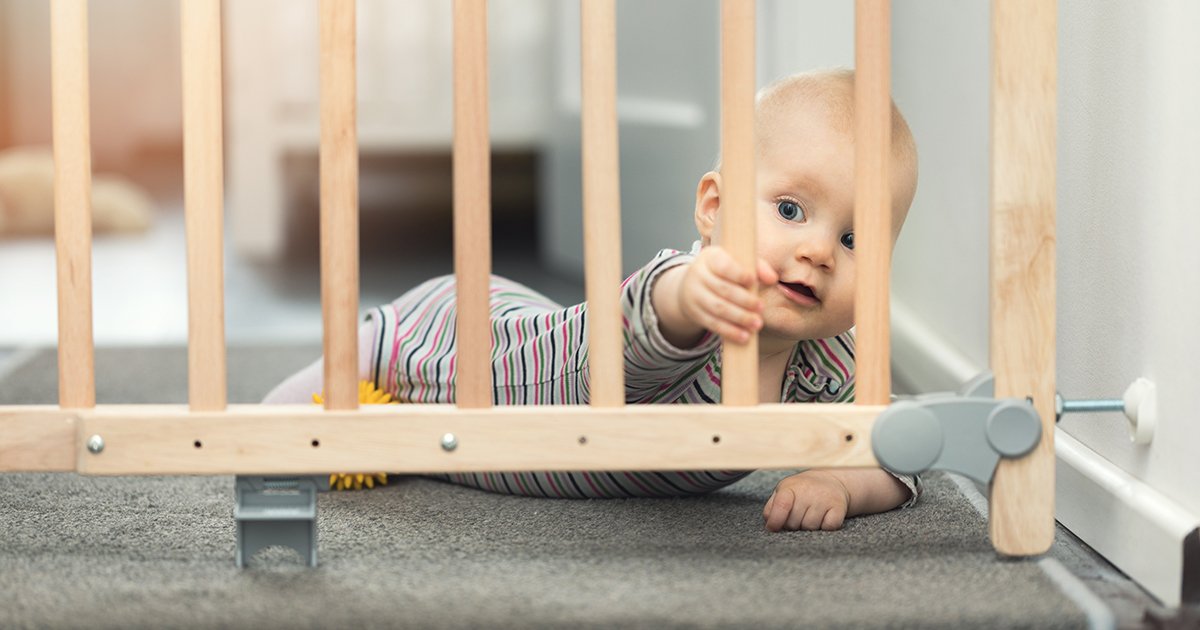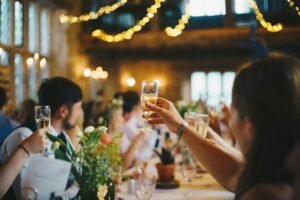
Toddler-proofing your home is something you can do towards the end of your pregnancy to get ready for your new arrival, or you may want to wait until your little one starts to show signs that they’re ready to move before you put safety measures in place. Either way, before your baby starts crawling or your toddler begins cruising along the furniture, you’re going to want to make sure that your home is as safe as it can be.
Childproof Electrical Outlets
Ensure your plug sockets are toddler proofed by fitting them with covers. Safety experts no longer advise the plastic plug types but rather a lockable cover for the entire socket. This also allows the outlet to be closed off to tiny fingers even when a plug is in use, meaning you can still use the power outlet but your toddler is protected from potential shocks.
Remove Trip Hazards
Trailing wires, shoes, toys and bag straps are all major trip hazards for curious toddlers who aren’t yet steady on their feet. Avoid leaving things stored on the floor, especially in hallways. This can be avoided with proper home storage solutions such as under the stairs cupboards or drawers.
Install Safety Gates
Safety gates are a must for homes with staircases and can also be used to prevent your toddler from gaining access to areas unsupervised, such as the kitchen or hallway.
When fitting safety gates across a stairway, they should be placed at both the top and the bottom. You’ll need to measure the opening carefully and ensure that the gate is correctly fitted to the wall on both sides. ‘No-trip’ gates are preferable as these don’t have a metal bar across the bottom of the walkway, meaning you and your toddler are less likely to trip or stumble when walking through it.
Secure Heavy Furniture
Heavy furniture such as bookcases and entertainment units should be securely fitted to the wall using the correct fixtures and fittings, to prevent them from toppling over if curious toddlers decide to pull on them or climb the shelves.

Child Locks For Draws and Cupboards
Child locks and catches can prevent little hands from being trapped in drawers and cupboards, as well as keep curious toddlers away from things they shouldn’t have.
Cover Sharp Corners and Edges
Cushioned covers soften sharp corners on furniture that toddlers could hurt themselves on. Pay particular attention to furniture at toddler-head height such as coffee tables and TV cabinets.
Invest In Proper Storage
You need to ensure that potentially dangerous objects are kept well out of reach of your toddler. This applies to obvious things, such as knives, alcohol, cleaning products and medicines as well as less obvious items, for example, nuts, and beads that could be a choking hazard and extremely dangerous items such as button batteries. You should also ensure that blind cords and strings aren’t left dangling as these can be a strangulation hazard.
Restrict Access to the Kitchen and Bathroom
Your home’s kitchen and bathroom areas present a major hazard for your curious toddler therefore it’s sensible to restrict access to these areas unless you’re able to closely supervise them. This might mean keeping the doors firmly closed or installing a safety gate.
Have a Designated Play Area
Having a designated play area in your home or garden gives your toddler a space where they’re free to run wild and explore their environment without you needing to worry that they might injure or harm themselves the moment you turn your back.
The area should have a level surface that’s firm but soft in case of falls. Ideally, it should be non-slip and easy to clean too. Hazards should be removed or minimised as discussed above and you can fill the space with safe items for your toddler to explore, whether that’s age-appropriate toys and play equipment or simple items like watering cans, and plastic cups that can often keep toddlers entertained for hours!
Keep an eye out for signs of wear and tear in toys and play equipment and remove and replace items as needed. Remember, that the point of toddler proofing and creating a safe play space isn’t to prevent your toddler from ever hurting themselves – that would be an impossible task for any parent – but rather to make their environment as safe as possible to limit the dangers they’re exposed to and reduce the risk of serious injury or harm.




